Urban Green Cover and Built-up Analysis for Melbourne-region | I Hug Trees
Monthly Analysis of City Vegetation for Melbourne-region, tracking vegetation health and urban development trends from satellite data. This digest integrates NDVI and NDBI indices, highlights zones of vegetation stress versus built-up surfaces, and assesses urban heat island effect with heat-risk mapping and 3D visualizations.
Published on: 2025-10-17

This preview, captured by the Sentinel-2 satellite from its orbit at approximately 786 km above Earth, shows the Melbourne-region Imagery observed on 2025-10-16.
Welcome to the latest environmental digest for the Melbourne region, powered by Sentinel-2 satellite data from October 16, 2025. This month's analysis focuses on the Normalized Difference Vegetation Index (NDVI) and the Normalized Difference Built-up Index (NDBI) to assess vegetation health and built-up intensity. Only images with cloud cover below 50% are considered, ensuring accurate readings. This digest is produced monthly to capture meaningful environmental changes, sourced from the Microsoft Planetary Computer. Today's headline: vegetation shows a slight edge over built-up areas, suggesting a balanced urban-natural landscape.
Info Box for Awareness
Why this matters
At I Hug Trees we turn science into awareness so that we understand how humanity's effort and nature's wonders shape the living balance of our green spaces. The green patches around the globe vanish and recover telling us a story of resilience and renewal. Is it not? As we aim to bring scientific credibility into our numbers and maps we help everyone see what connects us all.
Understanding NDVI and NDBI
Satellites like Sentinel-2 capture sunlight reflected from the Earth in many narrow colour ranges, called spectral bands. Plants and trees reflect more light in the near-infrared band and absorb more in the red band, that’s how NDVI helps us see how green or healthy an area is. NDBI uses other bands to highlight built-up areas, showing how vegetation and development change side by side. Together, they help us understand the story of our landscapes, where green spaces thrive and where it needs care.
Methodology
NDVI (Normalized Difference Vegetation Index) values were derived from Sentinel-2 imagery using red (B04) and near-infrared (B08) bands. Cloud masks were applied using QA60 flags. Images were processed at 10 m resolution through the Microsoft Planetary Computer API. Monthly NDVI averages are compared over time to assess vegetation trends and greenness changes. Note: Some summary insights in this analysis were generated with the help of AI tools. All satellite data and numerical outputs are based on verified Sentinel-2 observations.
Data integrity & processing note
All datasets are processed using open satellite imagery from the Microsoft Planetary Computer and verified with consistent parameters such as cloud cover, resolution, and band alignment. Each NDVI and NDBI image is generated using reproducible Python workflows to maintain scientific credibility.Data processing and map generation were performed using AWS cloud infrastructure.
NDVI & NDBI Historical Trends - Melbourne-region
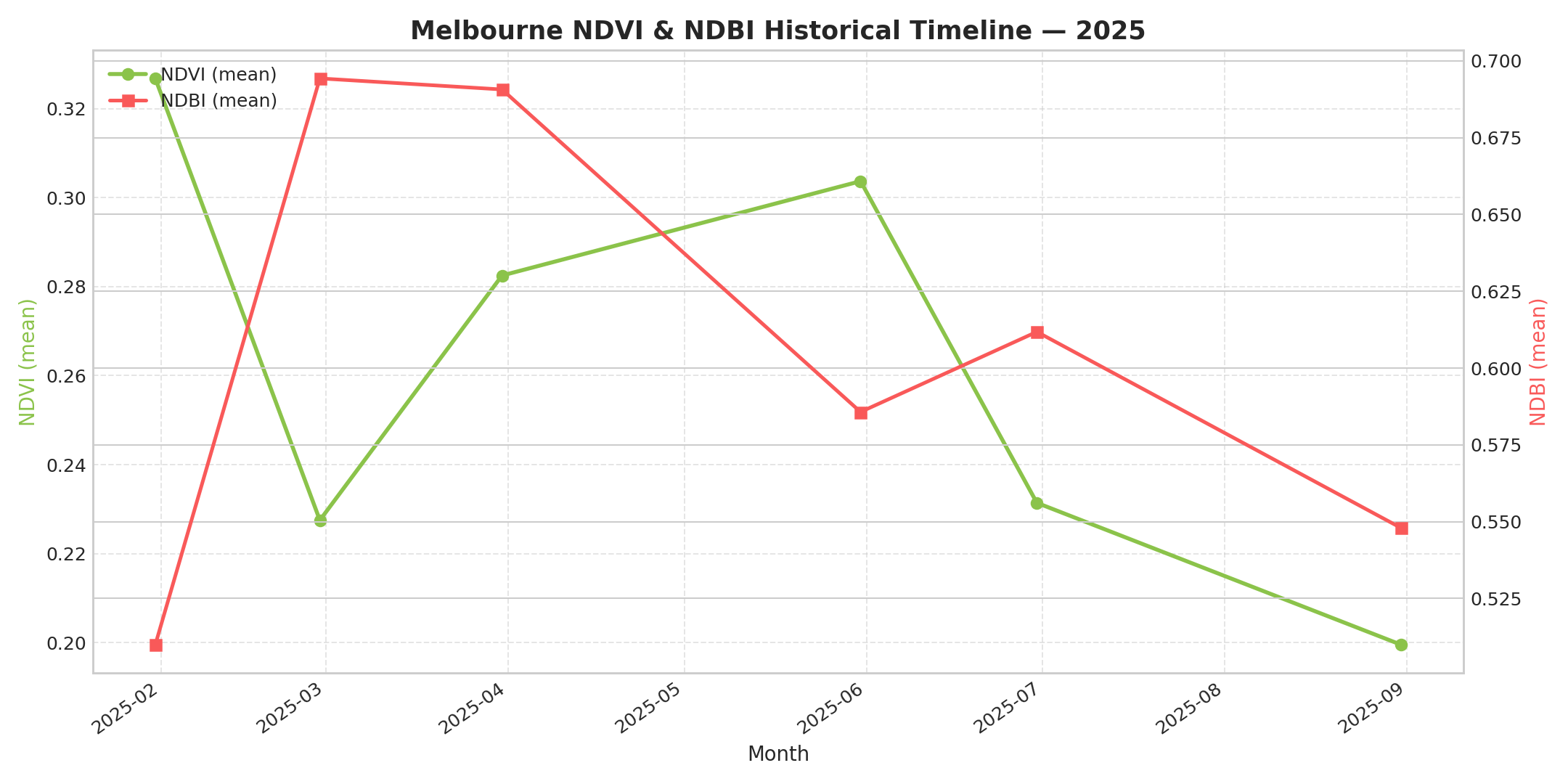
This graph shows monthly NDVI and NDBI values, capturing how vegetation and built-up areas changed across the Melbourne-region throughout the year.
NDVI
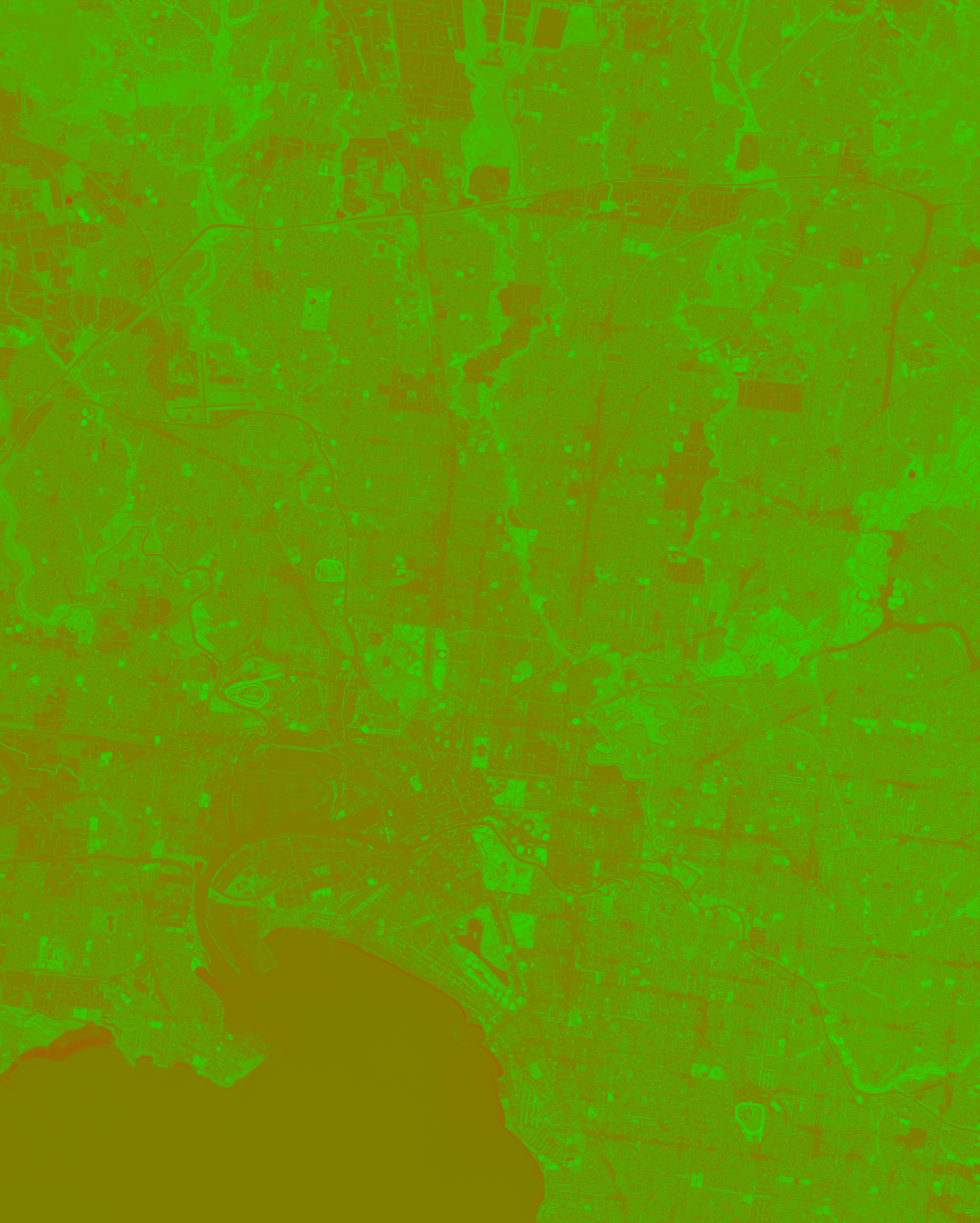
NDVI — color visualization
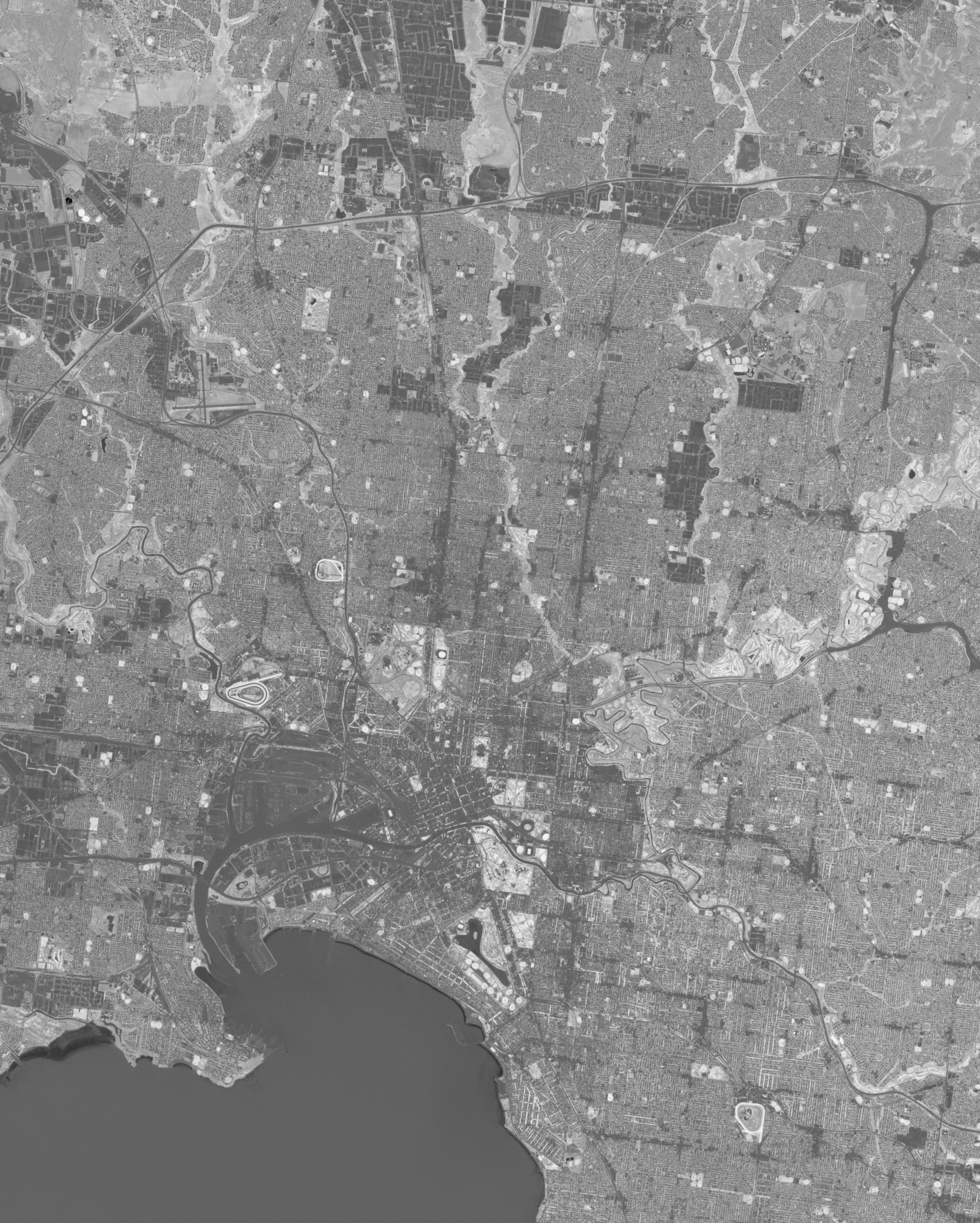
NDVI — greyscale (index values)
NDVI csv values
| min | max | mean | median | stddev |
|---|---|---|---|---|
| -0.462959349155426 | 0.7417024970054626 | 0.19107754528522491 | 0.18847811222076416 | 0.13983795046806335 |
NDBI (Built-up Index)
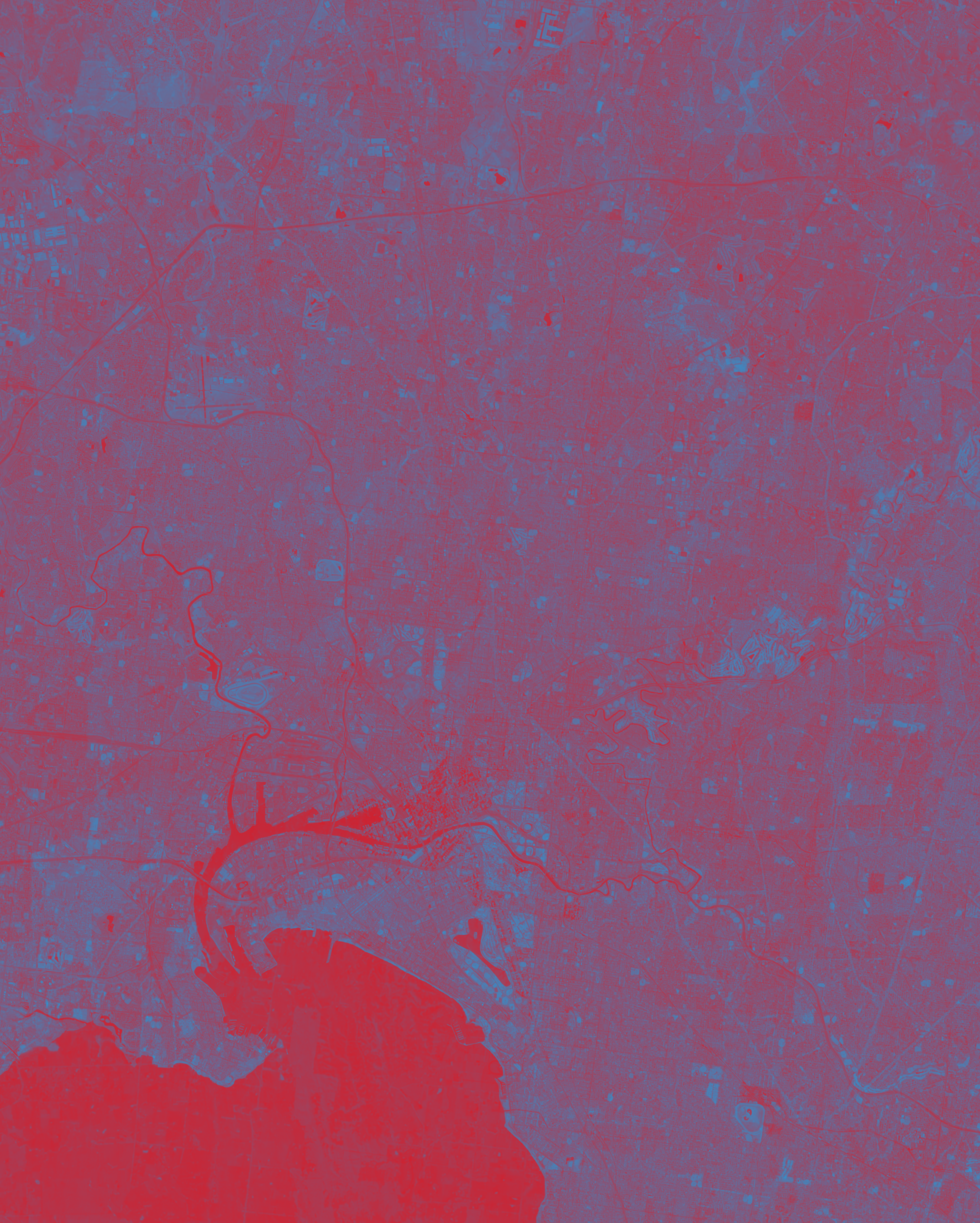
NDBI — color visualization
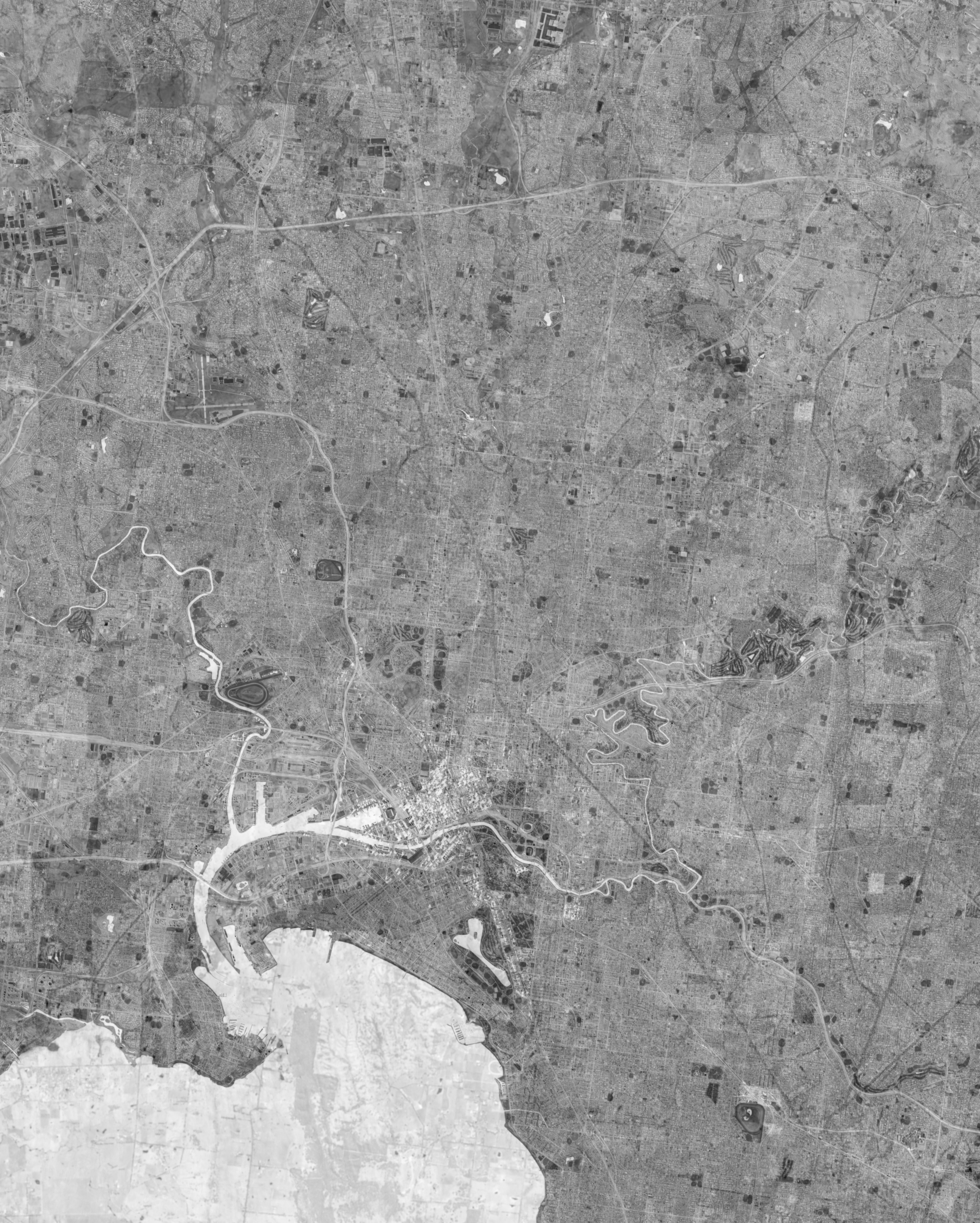
NDBI — greyscale (index values)
NDBI csv values
| min | max | mean | median | stddev |
|---|---|---|---|---|
| -0.7213495969772339 | 0.6356061100959778 | 0.07284432649612427 | 0.054658036679029465 | 0.16923962533473969 |
NDVI − NDBI & Heat Risk
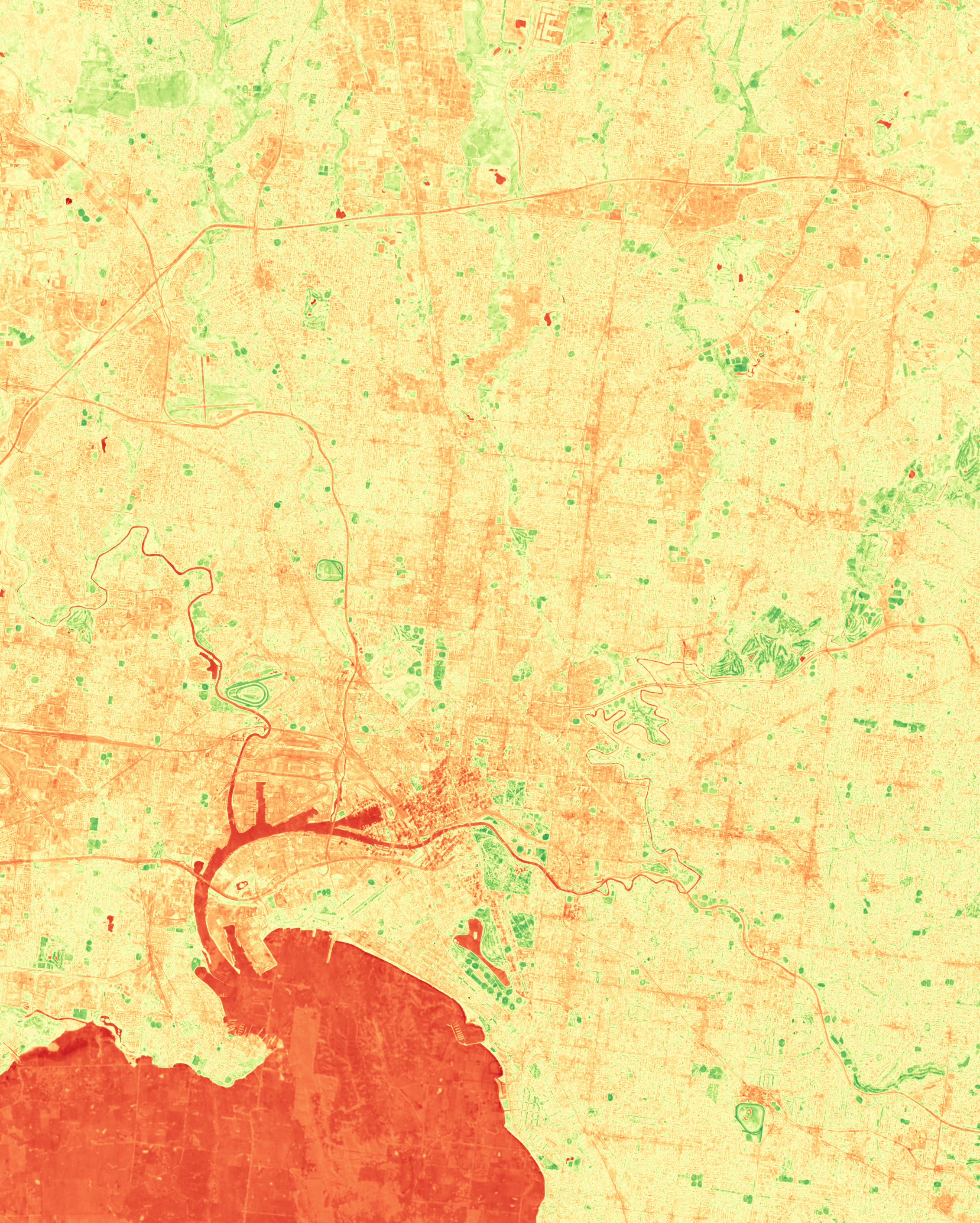
Difference visualization — highlights vegetation vs built-up dominance.
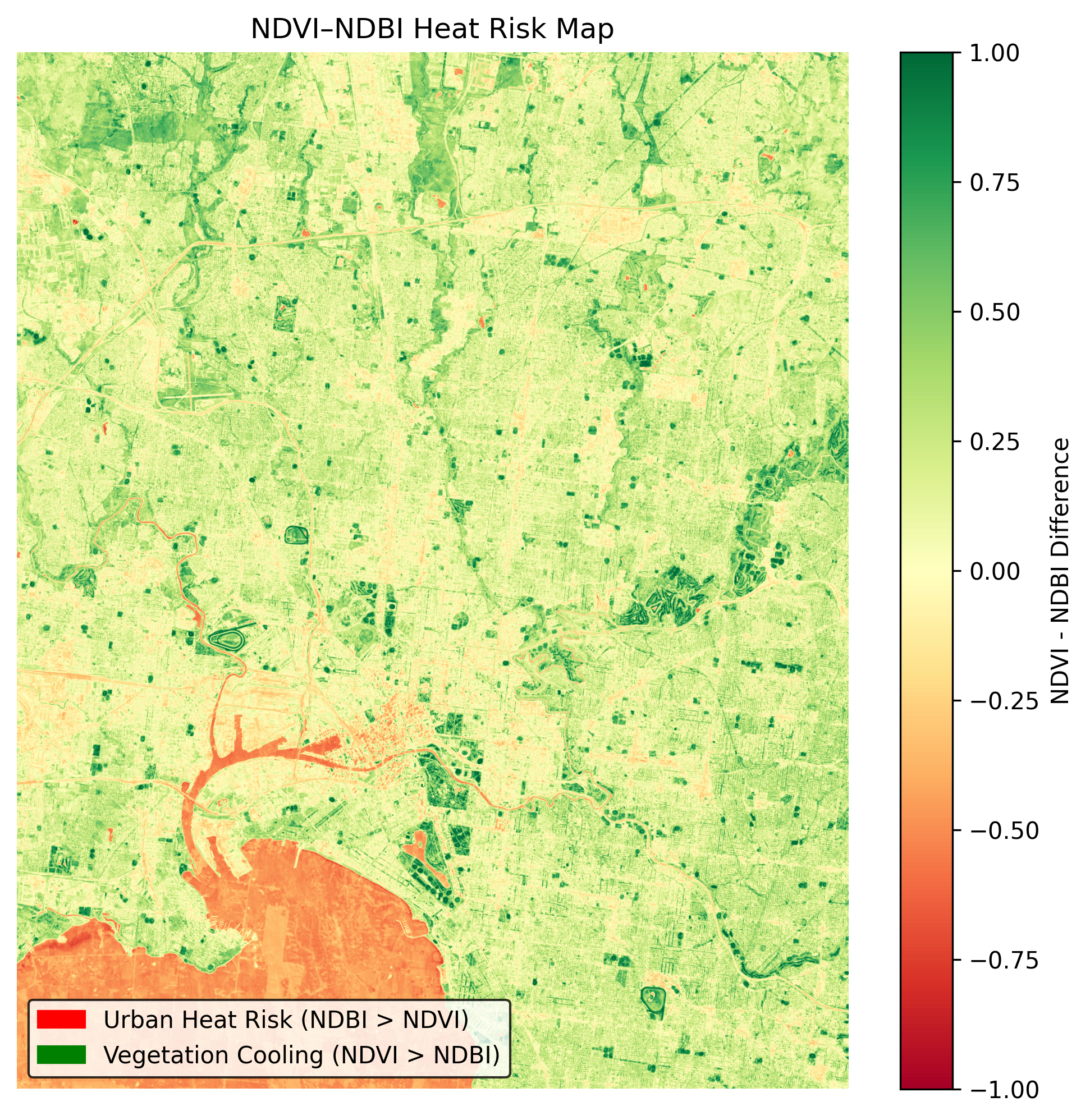
Heat risk interpretation derived from NDVI–NDBI difference.
The NDVI readings for the Melbourne region reveal a minimum value of -0.463, indicating areas with little to no vegetation, and a maximum of 0.742, pointing to lush, healthy vegetation. The mean NDVI of 0.191 and a median of 0.188 suggest moderate tree and vegetation cover across the region. The standard deviation of 0.140 highlights variability in vegetation density.
On the NDBI front, the minimum value of -0.721 and maximum of 0.636 show a wide range of built-up intensity. The mean NDBI of 0.073 and median of 0.055, both above zero, indicate a dominance of built-up surfaces. However, the significant standard deviation of 0.169 points to diverse urban development patterns.
Comparing NDVI and NDBI, the mean difference (NDBI - NDVI) is 0.022, suggesting a slight predominance of built-up surfaces over vegetation. This difference is visualized in the NDVI–NDBI difference map (see ndvi_ndbi_diff_color.png), where areas with NDBI greater than NDVI are flagged as higher heat-risk zones (see ndvi_ndbi_heatrisk.png).
- Identify and monitor built-up hotspots for urban heat island effects.
- Promote green spaces in areas where NDVI is lower than NDBI to enhance cooling effects.
- Consider the variability in vegetation and built-up areas for targeted urban planning and conservation efforts.
3D Renders (Rayshader & Rayrender)
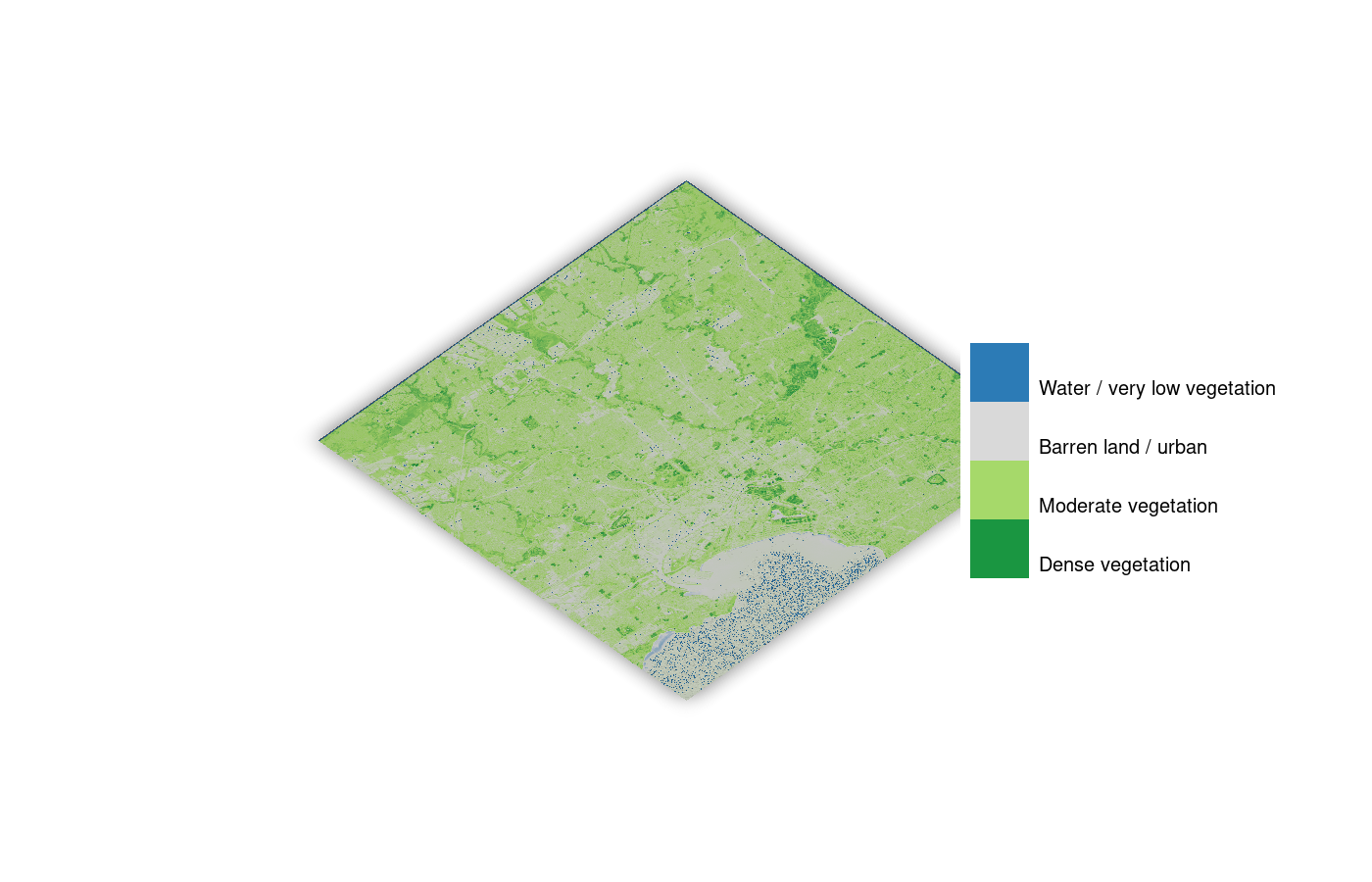
Rayshader 3D visualization derived from NDVI height-extrusion
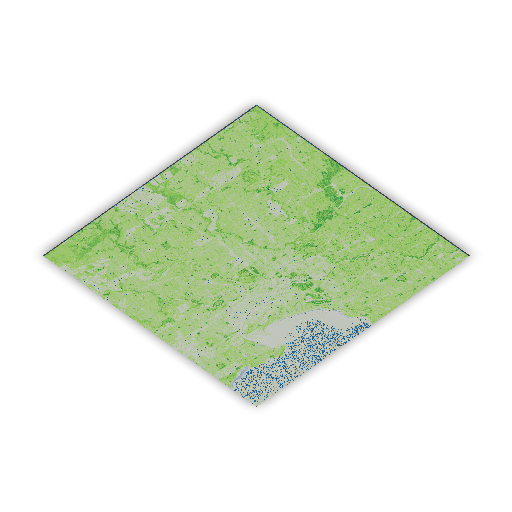
Rayrender 3D visualization derived from NDVI height-extrusion
Interactive NDVI overlay (zoom, pan, transparency). Use it alongside the static maps above.
Explore the interactive overlay (ndvi_map.html) to zoom in on specific areas, adjust layer transparency, and compare NDVI and NDBI layers. Validate features against high-resolution basemaps for accuracy. Note that cloud cover, though minimal at 8.59%, may affect certain readings. Immediate next steps include field validation of satellite observations and establishing a repeat monitoring cadence to track changes over time.
Urban heat island effect
In summary, the Melbourne region shows a slight dominance of built-up surfaces over vegetation, as indicated by the mean difference of 0.022 (NDBI - NDVI). This suggests a need for continued monitoring and targeted urban greening to mitigate urban heat island effects. Regular monthly assessments, coupled with community engagement in local restoration projects, are recommended. Disclaimer: this analysis refers to the satellite crop / geo-bounds stored under the 'Melbourne-region' folder (may include extended suburbs) and does not represent the full administrative limits of Melbourne.
Get involved
Every dataset, image, and map here is part of a bigger mission — to connect people with the science behind urban greenery. If this work inspires you, there are more ways to explore and participate:
- Read our Urban Forestry Daily Digest — a quick way to stay updated on global green space insights and local restoration efforts.
- Explore the latest Melbourne NDVI Digest to see how vegetation trends compare across regions.
- Visit our feature article Urban Forestry and Green Living to understand how urban forests improve our health, climate, and community life.
Join us in sharing awareness, supporting greener city planning, and bringing data-driven stories of hope to light. Email: nature@ihugtrees.org Have a place in mind you’d like us to study next? Share the city or region name where you’d love to see an NDVI and NDBI analysis.
Alternatively, send us an email directly. We review every suggestion to understand where green monitoring can create the most impact.References & Data
Free to Download (Please cite):
I Hug Trees NDVI Data Citation:
The NDVI and NDBI GeoTIFF and images are provided by I Hug Trees for scientific purposes. Please cite as:
@misc{ihugtrees_ndvi_2025,
author = {I Hug Trees},
title = {NDVI and NDBI Analysis Data - Chennai region 2025},
year = 2025,
note = {GeoTIFF and images provided for scientific purposes},
url = {https://ihugtrees.org}
}
Microsoft Planetary Computer Citation
If the Planetary Computer is useful for your work, please cite it using this record on Zenodo:
@software{microsoft_open_source_2022_7261897,
author = {Microsoft Open Source and
Matt McFarland and
Rob Emanuele and
Dan Morris and
Tom Augspurger},
title = {microsoft/PlanetaryComputer: October 2022},
month = oct,
year = 2022,
publisher = {Zenodo},
version = {2022.10.28},
doi = {10.5281/zenodo.7261897},
url = {https://doi.org/10.5281/zenodo.7261897}
}